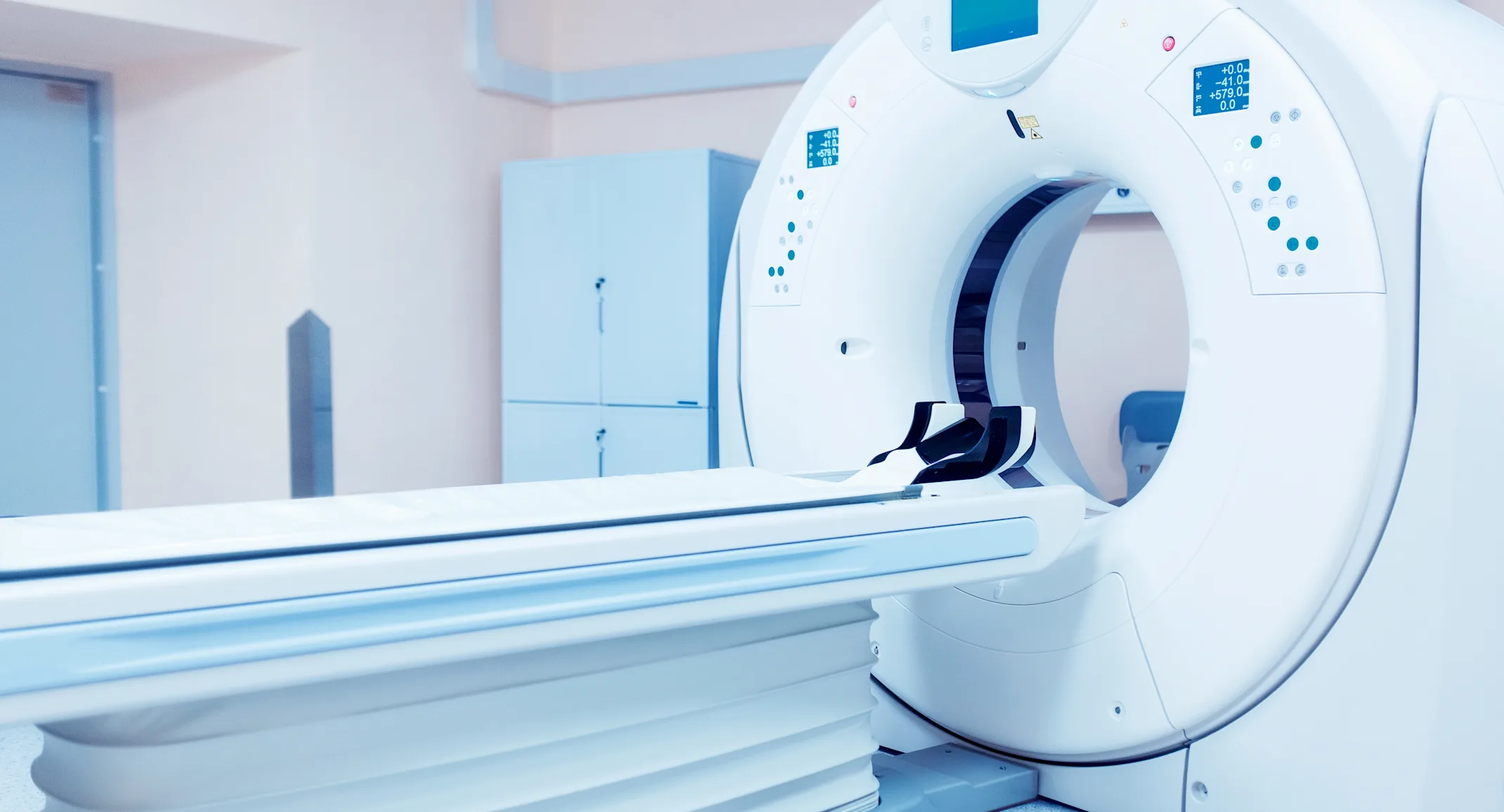What is a CT scan?
CT scans are non-invasive and non-painful. Your pet will be on a movable table that is advanced into a tube-like structure where the x-ray beam can be rotated 360 degrees around your pet. As your pet advances into the tube, the CT scan takes multiple images. A computer then reassembles the multiple images to create a three-dimensional picture of the body part being scanned.
Why has a CT scan been recommended?
Pets who are candidates for a CT scan include those with lung disease, screening the lungs for metastatic cancer, nasal disease, ear disease, multiple abdominal conditions, spinal disease (including ruptured discs in the spine), and a variety of orthopedic conditions. The 360-degree rotation technology avoids the superimposition of organs and tissues that occurs with conventional x-rays and therefore provides a clearer image. In some cases, a contrast media of intravenous iodine helps to increase the diagnostic quality of the scan. The information gained from a CT scan helps your veterinarian to make a definitive diagnosis and offer you the best options for treating your pet.
Are there any known complications from a CT scan?
CT scans are considered safe, but they do use ionizing radiation (like an x-ray). Some pets may be given an iodine-based dye intravenously and the dye in a few cases may cause side effects that are brief. Unlike with human patients who can be instructed to stay still for the examination pets have to be anesthetized for a CT scan. Rare anesthetic complications can occur. All patients have an intravenous catheter placed prior to the CT scan and are closely monitored.
How do I prepare my pet for a CT scan?
In preparation for general anesthesia, your pet should be given its normal meal the evening before, but no food after that meal unless directed otherwise by your veterinarian. You may continue to allow water for your pet. Check with your veterinarian about when to give any medications your pet may be currently taking.
How long will the CT scan take?
The actual CT scan takes only a few minutes, but preparation for the procedure including anesthetic induction can take 30-60 minutes. After the scan, your pet is closely monitored until awake and then will be assigned a recovery space in the ICU. Pick-up time for your pet will be arranged the same day as the scan. You will also receive an instruction sheet for home care.

